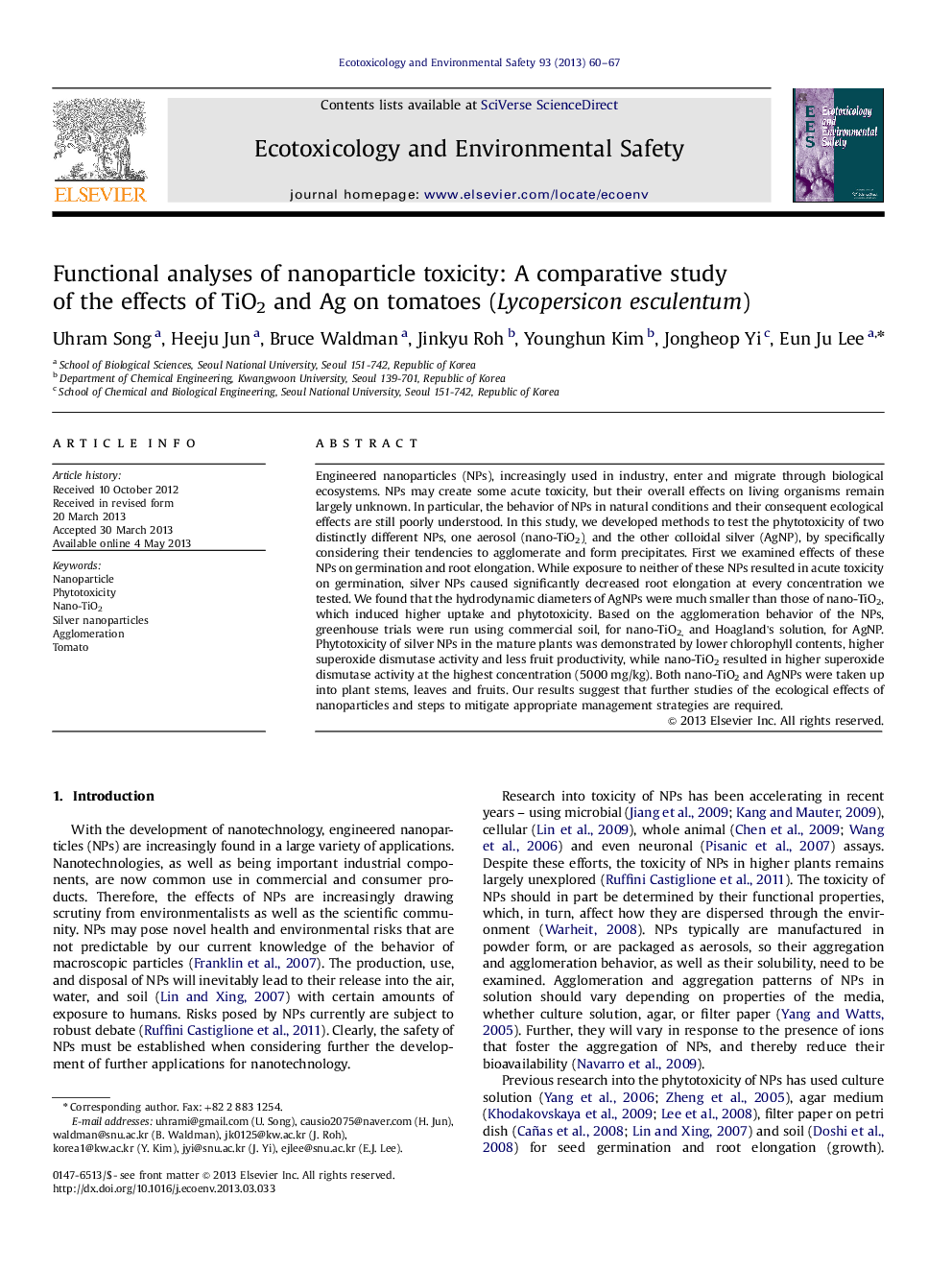| Article ID | Journal | Published Year | Pages | File Type |
|---|---|---|---|---|
| 4420267 | Ecotoxicology and Environmental Safety | 2013 | 8 Pages |
•Toxicity researches considering the characteristics of nanoparticles are required.•Two nanoparticles with distinct characteristics (aerosol/colloid) were tested.•Nano-TiO2 were not phytotoxic, while silver nanoparticles (AgNPs) were phytotoxic.•AgNPs with smaller hydrodynamic diameters showed higher toxicity and accumulation.•Nanoparticles are accumulated in plants, therefore further studies are required.
Engineered nanoparticles (NPs), increasingly used in industry, enter and migrate through biological ecosystems. NPs may create some acute toxicity, but their overall effects on living organisms remain largely unknown. In particular, the behavior of NPs in natural conditions and their consequent ecological effects are still poorly understood. In this study, we developed methods to test the phytotoxicity of two distinctly different NPs, one aerosol (nano-TiO2), and the other colloidal silver (AgNP), by specifically considering their tendencies to agglomerate and form precipitates. First we examined effects of these NPs on germination and root elongation. While exposure to neither of these NPs resulted in acute toxicity on germination, silver NPs caused significantly decreased root elongation at every concentration we tested. We found that the hydrodynamic diameters of AgNPs were much smaller than those of nano-TiO2, which induced higher uptake and phytotoxicity. Based on the agglomeration behavior of the NPs, greenhouse trials were run using commercial soil, for nano-TiO2, and Hoagland's solution, for AgNP. Phytotoxicity of silver NPs in the mature plants was demonstrated by lower chlorophyll contents, higher superoxide dismutase activity and less fruit productivity, while nano-TiO2 resulted in higher superoxide dismutase activity at the highest concentration (5000 mg/kg). Both nano-TiO2 and AgNPs were taken up into plant stems, leaves and fruits. Our results suggest that further studies of the ecological effects of nanoparticles and steps to mitigate appropriate management strategies are required.
